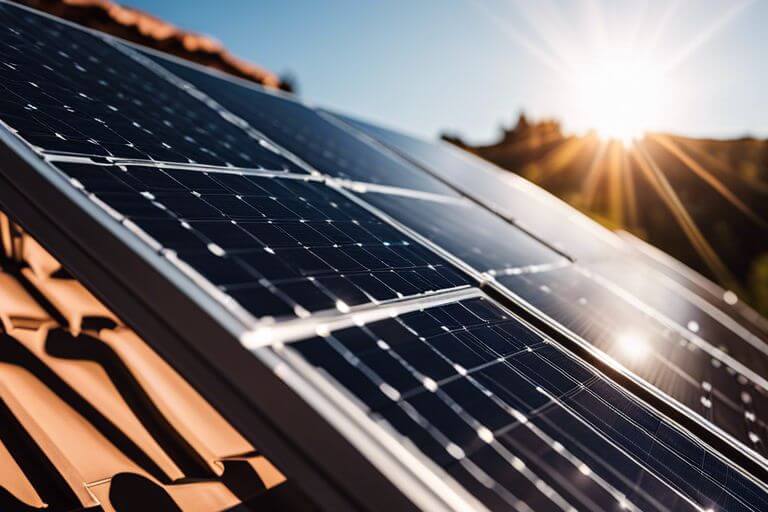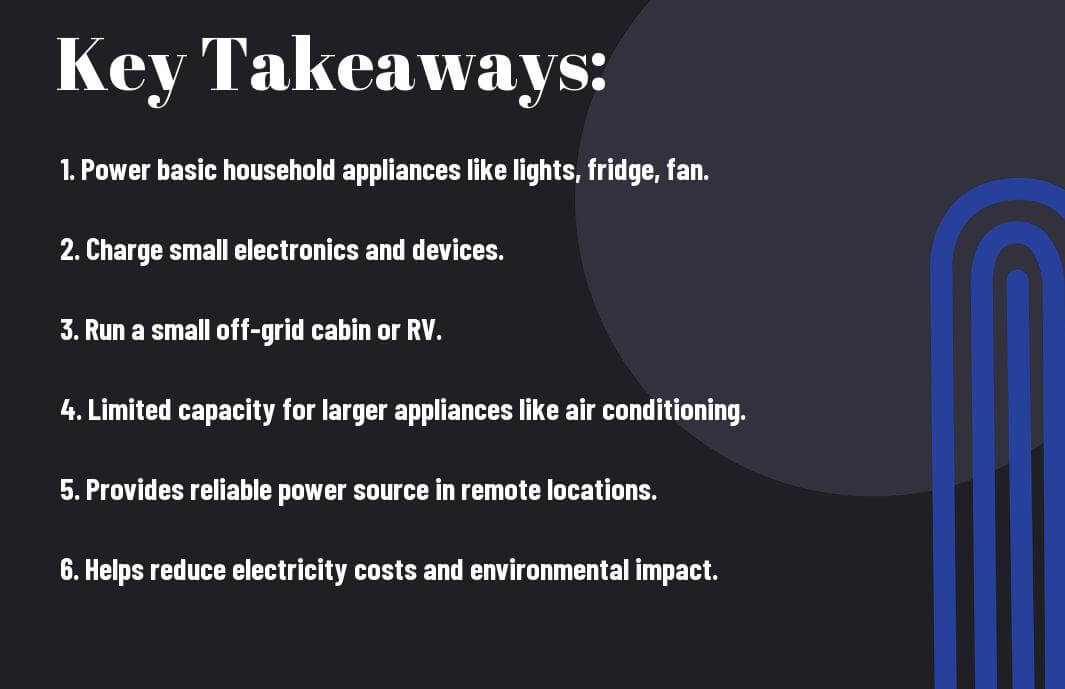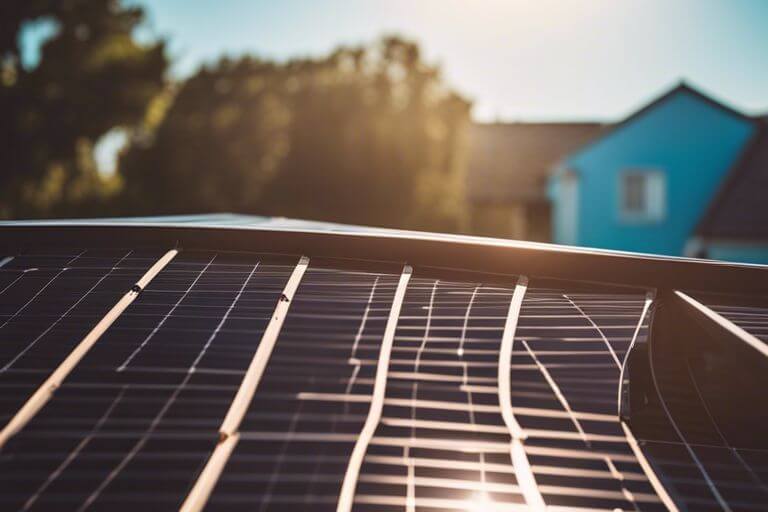Overwhelmed by the idea of solar power but unsure where to start? Wondering how much juice you can get from a 500 watt solar panel? Let’s break it down for you. A 500 watt solar panel, on average, can generate around 2.5 kilowatt-hours (kWh) of electricity per day. This can power smaller appliances like laptops, lights, or a small refrigerator. Understanding what a 500 watt solar panel can run will help you make informed decisions about your solar energy needs.
Key Takeaways:
- Power Output: A 500 watt solar panel can typically produce 500 watts of power per hour under ideal conditions.
- Run Appliances: It can run various appliances such as lights, fans, small electronics, and even some larger appliances depending on their wattage and the amount of sunlight available.
- Storage and Efficiency: To maximize its usage, you may need to consider adding a battery storage system to store excess energy for nighttime or cloudy days, and ensure the efficiency of the solar panel system.
What Can a 500 Watt Solar Panel Power?
Small Appliances
To start off, a 500 watt solar panel can power a variety of small appliances in your home. These may include devices like a laptop, a small television, a fan, or even a mini refrigerator. With 500 watts of power, you can keep these imperative gadgets running smoothly without relying on the grid.
Lighting Systems
To add to that, a 500 watt solar panel can also power lighting systems in your home or outdoor space. This means you can run LED light bulbs, string lights, or even security lights using the energy generated by the solar panel. Imagine having well-lit evenings in your backyard without worrying about increasing your electricity bill!
Lighting plays a crucial role in setting the ambiance of a space and ensuring safety and security. With a 500 watt solar panel, you can efficiently power various lighting systems without any additional costs once the system is set up. It’s a sustainable and cost-effective way to light up your surroundings.
Calculating Your Energy Needs
You may be wondering how much energy a 500-watt solar panel can actually provide. To get a better understanding of this, it’s helpful to calculate your energy needs. If you’re interested in knowing how many amps 500 watts of PV will produce, you can check out this forum discussion.
Determining Your Daily Energy Consumption
Calculating your daily energy consumption is a crucial step in figuring out how much power you need from a 500-watt solar panel. Consider the appliances and devices you’ll be running, how long you’ll be using them each day, and their power requirements. By adding up the wattage of all these items, you can estimate your daily energy consumption.
Factors Affecting Energy Output
One important factor to consider is the amount of sunlight your solar panel receives each day. Cloud cover, shading, and the panel’s tilt and orientation all play a role in its energy output. Additionally, temperature can affect the efficiency of the panel, as extreme heat can reduce its performance.
- Panel orientation and tilt
- Shading and obstructions
- Temperature
For instance, if your solar panel is partially shaded during the day, its energy output will be compromised. After considering these factors, you can better estimate how much energy your 500-watt solar panel will be able to produce in a day.

How Long Will a 500 Watt Solar Panel Last?
Battery Life and Capacity
For a 500 watt solar panel system, the longevity of your battery will depend on its capacity and how you maintain it. Typically, solar batteries are designed to last between 5 to 15 years, but this can vary based on usage patterns and environmental factors. It’s crucial to choose a high-quality battery with sufficient capacity to meet your energy needs.
Charging Times and Cycles
Battery charging times and cycles are important considerations when it comes to the lifespan of your solar panel system. The number of charging cycles a battery can undergo affects its overall longevity. It’s crucial to follow proper charging and discharging practices to maximize the life of your battery. Additionally, the charging time can vary based on the weather conditions and the efficiency of your solar panels.
Understanding the relationship between charging times and cycles is crucial for ensuring the longevity of your solar panel system. By monitoring your battery’s charging cycles and following recommended guidelines for usage, you can optimize its performance and extend its lifespan. Regular maintenance and monitoring of your system will allow you to catch any issues early and take corrective action to prolong the life of your 500 watt solar panel system.
Real-World Applications
Off-Grid Cabins and Homes
Many people choose to use 500 watt solar panels to power their off-grid cabins and homes. To give you an idea of what this setup can run, a 500 watt solar panel system can typically power lights, small appliances like a refrigerator or microwave, electronic devices, and even a small water pump. With proper energy management and storage, you can enjoy a comfortable off-grid lifestyle without relying on traditional power sources.
RVs and Campers
To make the most of your RV or camper adventures, you can rely on a 500 watt solar panel to keep your batteries charged and run various electronics on board. With a 500 watt solar panel setup, you can power your lights, charge your devices, run a small fridge, and even use a fan or small heater when needed. This setup can provide you with the convenience of power without the need for noisy generators or constant hookups to power outlets.
Installing solar panels on your RV or camper not only gives you the flexibility to camp off-grid but also reduces your carbon footprint as you travel, making your adventures more eco-friendly.
Real-world applications of a 500 watt solar panel system can vary depending on your specific needs and energy consumption habits. Whether you’re looking to power your off-grid cabin, enhance your camping experience in an RV, or simply reduce your reliance on traditional power sources, a 500 watt solar panel setup offers a versatile and sustainable solution to meet your power needs.

System Components and Configuration
Inverters and Charge Controllers
For your 500 watt solar panel system to effectively power your appliances, you will need an inverter and charge controller. An inverter is crucial as it converts the direct current (DC) electricity generated by the solar panels into alternating current (AC) electricity that your home appliances use. The charge controller regulates the voltage and current coming from the solar panels to ensure your batteries are charged safely and efficiently.
Mounting and Installation Options
The mounting and installation of your solar panels are crucial for optimizing their performance. The angle and direction in which you mount your panels can impact how much sunlight they receive, thus affecting the amount of electricity produced. The most common mounting options are roof mounts, ground mounts, and pole mounts. The choice will depend on your location, available space, and desired tilt angle for the panels.
Plus, proper installation is key to ensure your system functions optimally. You should consider factors such as shading, tilt angle, and wiring when setting up your solar panels. It’s recommended to consult with a professional to determine the best mounting and installation options for your specific setup.
Energy Efficiency and Optimization
After installing a 500 watt solar panel, you want to make sure you are maximizing its efficiency to get the most out of it. Two key factors that play a significant role in optimizing the performance of your solar panel system are panel angle and orientation, as well as shading and obstruction considerations.
Panel Angle and Orientation
One important factor to consider is the angle and orientation of your solar panels. For maximum efficiency, it’s ideal to place your panels at an angle that is equal to the latitude of your location. This allows the panels to receive sunlight as directly as possible throughout the day. Additionally, orienting your panels towards the south (in the northern hemisphere) or north (in the southern hemisphere) ensures they capture the most sunlight.
Shading and Obstruction Considerations
One factor that can significantly impact the efficiency of your solar panel system is shading. Shade from trees, buildings, or other obstructions can reduce the amount of sunlight your panels receive, lowering their overall output. It’s vital to regularly assess your site for any potential shading issues and trim trees or adjust panel placement accordingly to optimize sunlight exposure.
For instance, even a small amount of shading on a panel can cause a disproportionate decrease in energy production. By minimizing shading and obstructions, you can ensure that your solar panel system operates at its maximum potential and generates the most energy possible.

Summing up
Conclusively, a 500-watt solar panel can power various appliances and devices in your home, depending on their energy consumption and the amount of sunlight your panels receive. By referencing a helpful thread on DIY Solar Forum about how much solar power you should expect from 500W panels, you can better understand the capabilities and limitations of your solar setup. Do not forget, with proper planning and monitoring, you can maximize the usage of your solar power system and make the most of your renewable energy investment.
Q: How much electricity can a 500 watt solar panel run?
A: A 500 watt solar panel can generate approximately 2.5 kilowatt-hours (kWh) of electricity per day, depending on factors such as sunlight exposure and efficiency of the system. This can run smaller appliances like lights, fans, phones, laptops, and small televisions.
Q: What size battery is needed to store the electricity generated by a 500 watt solar panel?
A: To store the electricity generated by a 500 watt solar panel, you would typically need a battery with a storage capacity of at least 5 kilowatt-hours (kWh). This allows you to store excess energy generated during the day for use during periods of low sunlight or at night.
Q: Can a 500 watt solar panel run a household air conditioner?
A: While a 500 watt solar panel can generate a significant amount of electricity, it may not be enough to run a typical household air conditioner, which can require anywhere from 1,000 to 5,000 watts of power. To run a household air conditioner, you would likely need a larger solar panel system with multiple panels and a higher capacity battery storage system.
How many batteries do I need for a 1000-watt solar system
How many solar panels would you need to power a house
Can you sell power back to the grid in Oregon
